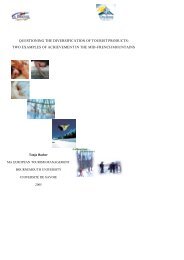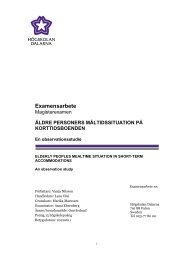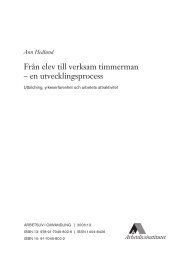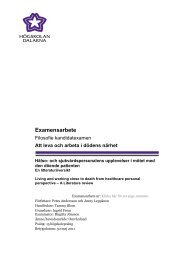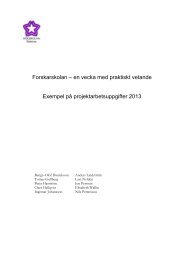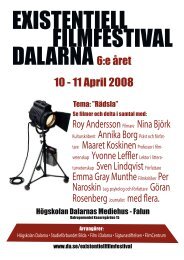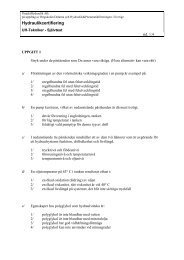Religious Tourism: The Way to Santiago
Religious Tourism: The Way to Santiago
Religious Tourism: The Way to Santiago
You also want an ePaper? Increase the reach of your titles
YUMPU automatically turns print PDFs into web optimized ePapers that Google loves.
CHAPTER 2 LITERATURE REVIEW<br />
• <strong>The</strong> more removed the rites of pilgrimage become from their original purity,<br />
the more likely is the growth of an avaricious priestly class and the rise of<br />
superstitious practices.<br />
<strong>The</strong>se statements about the common features in pilgrimage have also evolved.<br />
Nowadays, following all these statements depends on the quantity of faith or if the<br />
people have a strong religious belief, or a weak religious believe. Personal reasons<br />
also affect <strong>to</strong> follow all the common characteristics of pilgrims for all different<br />
religions.<br />
2.4 Pilgrims or <strong>to</strong>urists<br />
Coleman (2004) explains how there is a clear difference between <strong>to</strong>urism and<br />
pilgrimage. <strong>Tourism</strong> can be defined as a leisure activity while pilgrimage is more of<br />
a sacred journey. However, for the <strong>to</strong>urism sec<strong>to</strong>r, pilgrims are treated as simple<br />
<strong>to</strong>urists, because in their religious trips they have the same needs as non-devoted<br />
pilgrims, and moreover, they can visit typical <strong>to</strong>urist places like museums, cafes or<br />
shops, being the only difference the purpose of their visit.<br />
Nowadays, pilgrimage has become an important source for the <strong>to</strong>urism world. In<br />
general, this kind of <strong>to</strong>urism is linked <strong>to</strong> the thought of journeys <strong>to</strong> sacred sites,<br />
including a strong religious motivation. This research has helped <strong>to</strong> see this kind of<br />
<strong>to</strong>urism from a different angle and <strong>to</strong> understand that not all the people making<br />
pilgrimages or visiting religious places are really following a spiritual motivation.<br />
For this reason, a differentiation was tried <strong>to</strong> distinguish two different types of<br />
religious <strong>to</strong>urism, as not everyone going on a pilgrimage has the same reason for it.<br />
Nevertheless, it is almost impossible <strong>to</strong> clearly define the number of those who are<br />
devoted pilgrims and those with a desire of travelling for leisure and <strong>to</strong> admire<br />
beautiful buildings as unique art pieces, as for example, the ones visiting the<br />
Cathedral of <strong>Santiago</strong> de Compostela, unless a deep research is done. (Post et al,<br />
1998)<br />
David Mashhadigholam Rojo 12




